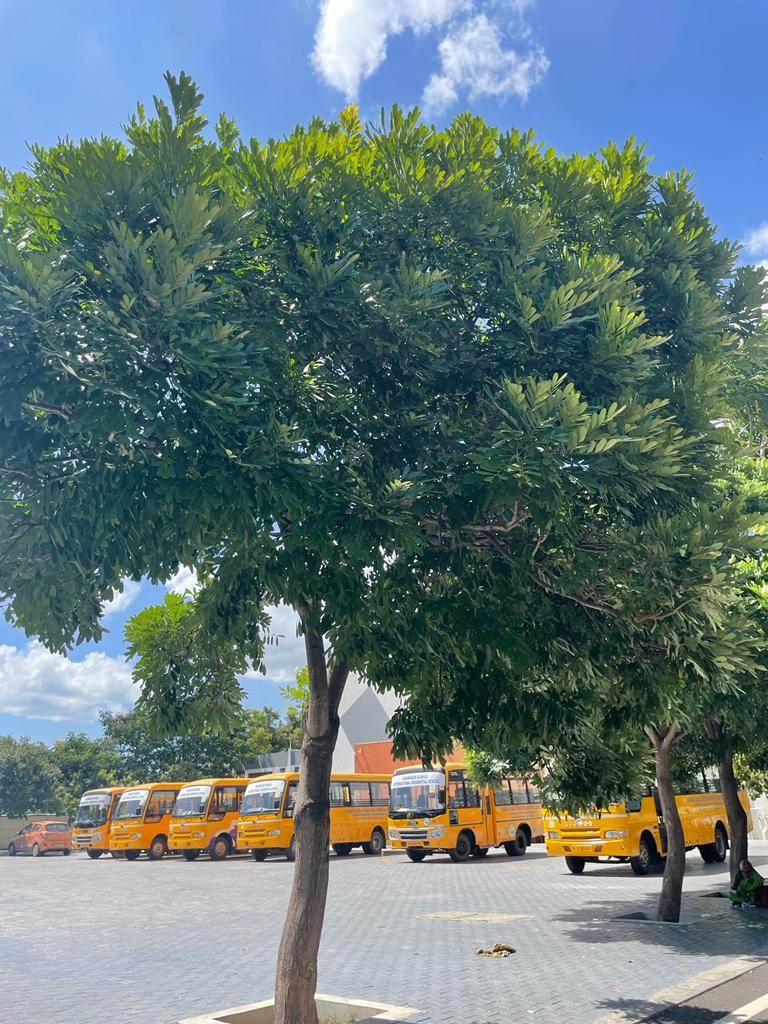Simarouba glauca is an evergreen flowering tree native to South America and the Caribbean. It is commonly called paradise-tree, dysentery-bark or bitterwood. The tree is well suited for tropical regions and its cultivation depends on rainfall distribution. It yields yellow flowers pollinated by bees and has a plump, oval and elongated purple fruit. The plant can grow about 40-50 feet tall and 25-30 feet wide, requiring a mean annual temperature of 22-90 degrees Celsius and a yearly rainfall of 2000 to 3000 mm. In our school (K’sirs) campus you can find this tree near our cycles parking area providing ample shade for us to sit under and enjoy our lunch.

It’s uses
Wood from this tree is insect-resistant and is used to manufacture toys, furniture, matches, and wood pulp for paper. Leaf litter and pulp produce rich vermicompost and organic matter. Simarouba produces raw material for soaps, detergents, biofuel, lubricants, cosmetics, varnishes, and pharmaceutical drugs.
The tree can also cure several diseases. The roots, leaves, bark extract, seeds and fruit pulp are remedies for Anemia, Acid reflux, Malaria, Edema, and fever. It is claimed to possess anticancer properties. Oil from the seed is free from bad cholesterol and is used as an alternative to common fat sources for baking in South America.
Animal life dependent on this tree
Simarouba glauca provides shelter for a lot of birds and insects (specially termites and bullet ants), supports soil microbial life, and facilitates the effective positioning of groundwater. And just like other plants it holds the soil together and reduces the presence of greenhouse gases in the atmosphere.







